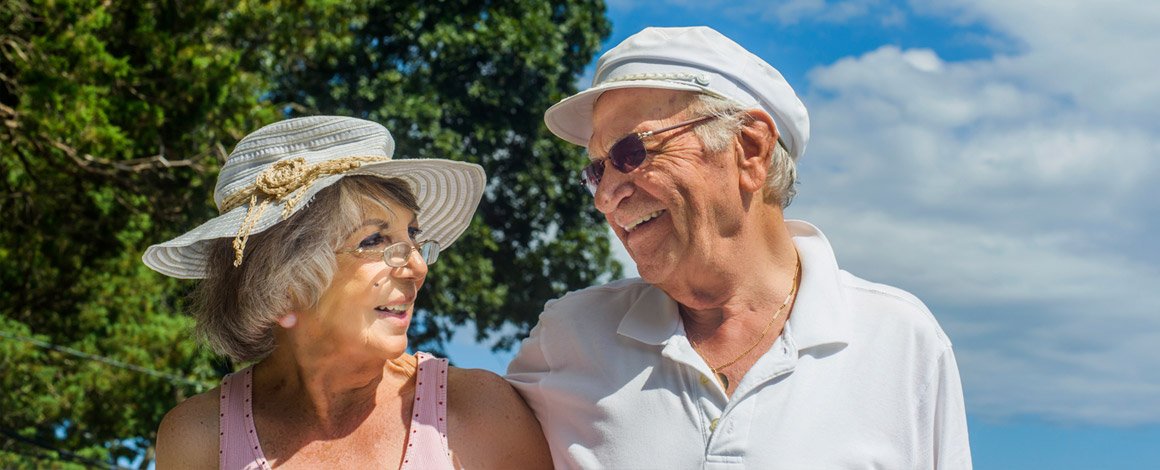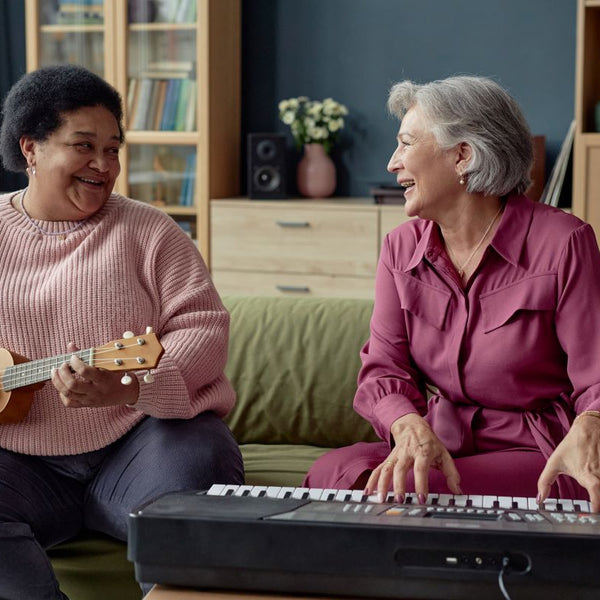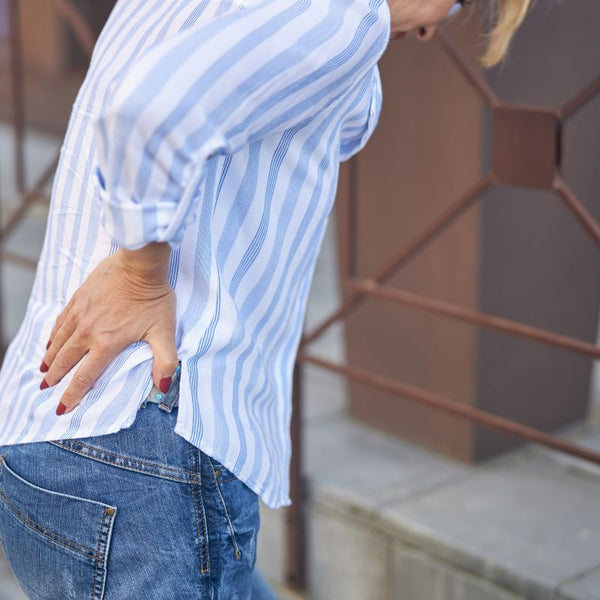As the human body ages, it goes through various physiological changes that can affect how we regulate our body temperature.
While the standard body temperature for adults sits between 36 - 37°C, this can vary among elderly people as their body rhythm changes and influences the overall physical condition and metabolism.
In this article, we’ll explore the typical ranges of a normal body temperature for elderly people, explaining what temperature is dangerous for the elderly and discuss how to address potential health issues or risks resulting from body temperature deviations.
Jump to:
- Understanding body temperature
- Factors affecting body temperature in elderly
- Normal temperature for elderly in Celsius
- What body temperature is dangerous for elderly
- Tips on maintaining normal body temperature in elderly
Understanding body temperature
Body temperature is our body’s ability to generate and get rid of heat. It’s controlled by the hypothalamus – a part of the brain that acts as a thermostat.
Essentially, maintaining a stable body temperature is crucial for several reasons, including:
- Metabolic efficiency: the way the body uses its own resources as energy
- Immune function: the body’s ability to defend itself against viruses and infections
- Enzymatic activity: the process of chemical reactions in the body in order to digest food and produce energy
- Cellular function: processes and activities that occur within the cells of your body to maintain its life and support growth
Factors that affect body temperature in elderly people
There are several factors that can influence body temperature, including:
1. Age
As already mentioned, the ability to regulate body temperature decreases with age and generally, the range of normal body temperature decreases as we get older. Similarly, ageing reduces the ability to sweat, so elderly people are at a higher risk of overheating.
2. Time of day
Body temperature naturally fluctuates throughout the day, usually peaking in the late afternoon and reaching its lowest point in the early morning.
3. Physical activity
Body movement naturally produces heat and temporarily increases our body temperature. On the other hand, being in the same position for long periods of time and general inactivity can lower body temperature as the body can lose heat faster than it can produce it when you’re not moving much.
4. General state of health
There are also various illnesses, infections and chronic conditions that can affect body temperature. For example, fever is a common body response to infection, as our immune system is trying to defend itself.
5. Medications and vaccines
Finally, certain medications can influence body temperature regulation, either as a side effect or through their intended outcome. This includes COVID and flu jabs.

Normal body temperature for the elderly in Celsius
Understanding what’s considered normal body temperature for elderly people is important for monitoring their physical wellbeing and identifying potential health issues. While the average normal body temperature for adults is typically around 37°C, this can vary in older generations.
Various studies suggest that normal body temperature in elderly people is around 36°C, usually caused by reduced metabolic rate and changes in blood circulation.
What body temperature is dangerous for elderly people
If the body temperature in an elderly person drops too low or increases significantly, it can pose a serious risk to their health and potentially cause complications.
Let’s take a closer look at the temperature thresholds that can indicate a potential risk for elderly people:
High body temperature in elderly people (Hyperthermia)
Hyperthermia occurs when the body overheats and can no longer regulate its temperature effectively. This condition includes heat exhaustion and heatstroke, which are both considered as risk factors to elderly individuals.
Heat exhaustion
Heat exhaustion is a condition when a human body overheats and is specifically common in elderly people, people with high blood pressure and those working in hot environments.
The body temperature for heat exhaustion usually ranges between 37.7 - 40°C, presenting a particular danger to elderly and people with chronic diseases, as their bodies are less efficient at regulating temperature and they may not sense or respond to heat stress appropriately.
The symptoms of heat exhaustion include heavy sweating, dizziness, nausea, headache, rapid heartbeat and muscle cramps.

Extreme weather, like heatwaves and hot weather, is one of the biggest risk factors when it comes to heat exhaustion in elderly, making it challenging for older adults to regulate their body temperature and adjust to sudden temperature changes.
When this condition occurs, it’s important to immediately move the person to a cooler environment, hydrate them with water and if the symptoms persist, seek medical help.
Heat stroke
Heat stroke is an emergency medical condition where the body temperature rises above 40°C.
The signs of heat stroke can include:
- Fainting
- Confusion
- Changes in behaviour
- Dry skin
- Shallow breathing
- Seizures
Especially in elderly adults, heat stroke can be a life-threatening condition and it’s important to call emergency services to get medical attention straight away.
Low body temperature in elderly people (Hypothermia)
As we grow older, we become more sensitive to cold than other adults and young people, and when their body temperature drops below the normal range, it can cause serious health risks.
Low body temperature, also known as hypothermia, occurs when the temperature drops below 35°C, as the body loses heat faster than it can produce it.
Older adults are particularly vulnerable to hypothermia, as their bodies‘ response to cold can be affected by health conditions, certain medications and ageing itself. So, hypothermia in elderly people can develop even in milder weather conditions or a small drop in temperature.

Depending on how severe the hypothermia is, the symptoms can include:
- Shivering
- Confusion
- Fatigue
- Shallow breathing
- Slow heart rate
- Unconsciousness (in some cases)
The best way to address hypothermia is to move a person to a warmer environment, provide warm drinks and use blankets to raise their body temperature.
However, in case of severe hypothermia, it’s vital to reach out to the emergency services.
Tips on maintaining normal body temperature in elderly people
With older adults being highly sensitive to temperature changes, let’s take a look at some useful tips on how to maintain normal body temperature in the elderly to enhance their wellbeing and reduce the risk of serious health complications and conditions.
Controlling indoor temperatures
Weather conditions can increase the risk to our health, but especially so for the elderly, so staying safe in hotter weather as well as when it’s cold outside to efficiently control indoor temperatures is key to maintaining normal body temperature in elderly people.

The indoor temperature should be kept at a comfortable level, typically around 21°C to 24°C.
Alongside sufficiently heating and cooling your home, it’s equally important to ventilate your indoor area to avoid stuffiness and regulate humidity.
Appropriate clothing
Another important step to take when regulating body temperature in elderly people is choosing appropriate clothing. The best practice is to dress in a number of lighter layers that can be either added or removed, depending on the temperature.

In cold weather, you might also want to consider using thermal wear, as these materials help your body stay warm while preventing excessive sweating and feelings of discomfort.
On the other hand, light, breathable fabrics are often suitable for warm days, protecting the skin from direct sun while allowing the body to naturally cool down.
Hydration and nutrition
Good hydration and a balanced diet both play crucial roles in regulating body temperature. While fluid intake helps metabolic processes and prevents dehydration, consuming nutritious food supports elderly people’s immune system and helps prevent the occurrence of chronic diseases that can affect the ability to regulate body temperature.
Physical activity
Regular physical activity is crucial for the overall health and wellbeing of older adults, including their thermoregulation system. While enhancing blood circulation and heat production, exercise is also important to reduce stress and improve the mental wellbeing of elderly individuals.
It’s important to avoid heavy, tiring physical activity in extreme weather conditions, as this may lead to overheating or hypothermia.
Routine health monitoring
Regular medical check-ups are particularly important in elderly people, to help diagnose various health conditions in their early stages and address them appropriately.
These also include measuring seniors’ body temperature, especially when they feel unwell and show symptoms of either overheating or hypothermia.
Conclusion
Overall, body temperature in elderly people can have a significant impact on their health and wellbeing, and it’s important to pay special attention to its regulation and changes.
By understanding how body temperature is regulated and recognising the signs of dangerous temperature levels, you can take proactive steps to keep your elderly loved ones safe in various weather conditions and environments.
Personal alarms
If you’re looking for additional support to your elderly loved ones when you can’t be with them, you might want to consider using one of our personal alarms. From detecting a fall to reaching out to the emergency services, our fall alarms and emergency buttons can help you resolve various situations while providing you with extra peace of mind.




